Auburn Speedster classic cars for sale
The Auburn Speedster stands out with its supercharged straight-eight engine, advanced styling by Alan Leamy and Gordon Buehrig, and its role in breaking multiple American speed records during the 1930s. With limited production and distinctive design, it attracts collectors who value both performance and historic significance.
Search results
Currently, there are no matching listings for your search.
Create search alert
Let yourself be notified as soon as a listing is published that matches your search filters.
Create listing
Do you have a Auburn Speedster that you want to sell? Then create a listing now.
Create listingAuburn Speedster listing references from Classic Trader
Below you will find listings related to your search that are no longer available on Classic Trader. Use this information to gain insight into availability, value trends, and current pricing for a "Auburn Speedster" to make a more informed purchasing decision.
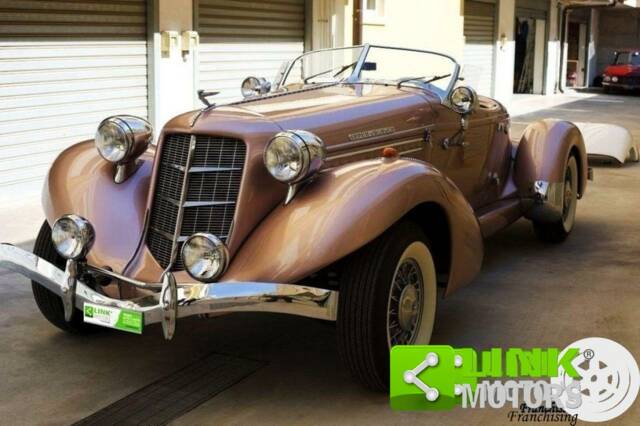
1974 | Auburn Speedster 851
AUBURN Speedster 851 Super-charged / Visibile a Bari

1974 | Auburn Speedster 851
AUBURN Speedster 851 Super-charged / Visibile a Bari
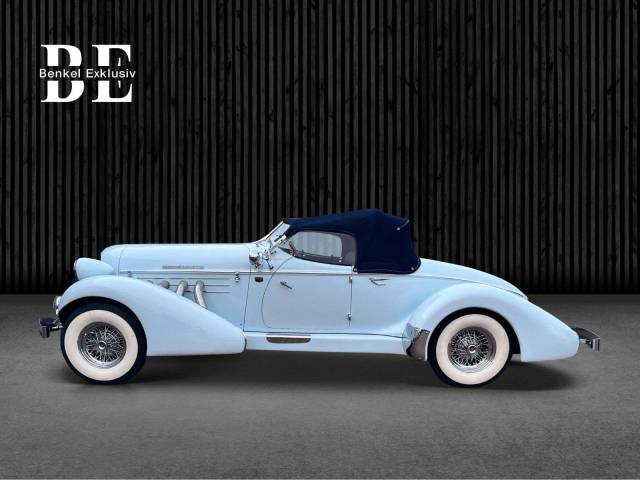
1978 | Auburn Speedster 851
Sonstige Marken Auburn Speedster 876 H-Zulassung

2004 | Auburn Speedster 851
Impressive Build - Gorgeous - Requires Recommission
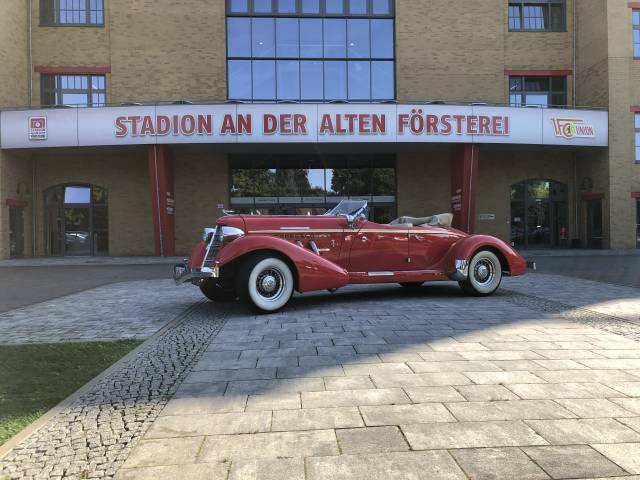
1936 | Auburn Speedster 851
Oldtimer Auburn Phaeton Boattail Speedster (1978)
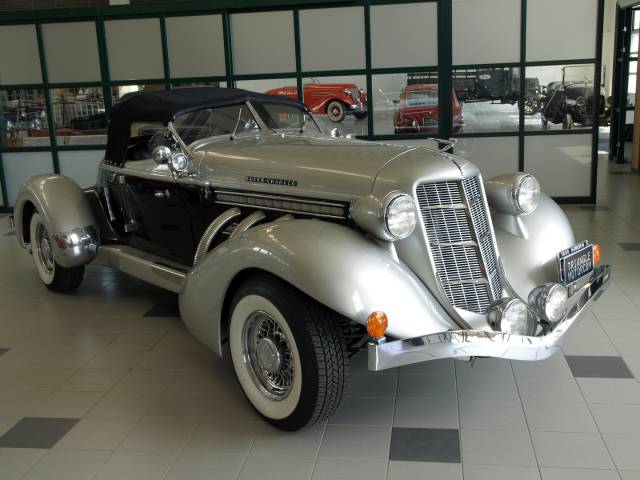
1980 | Auburn Speedster 851
Auburn 876 Speedster Replica
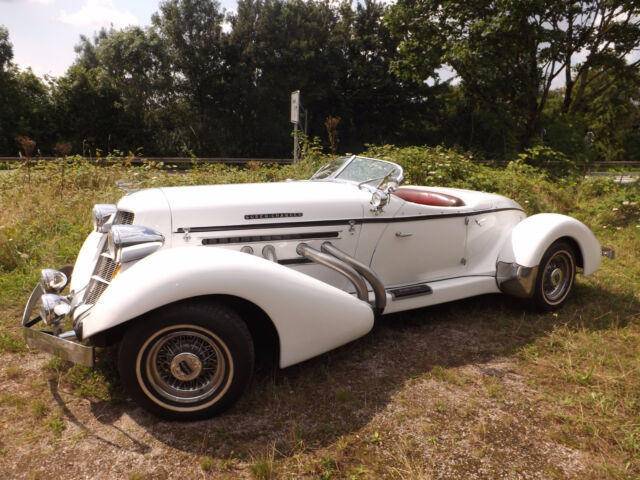
1981 | Auburn Speedster 851
Sonstige Sonstige Andere Auburn Speedster B 72 Replica
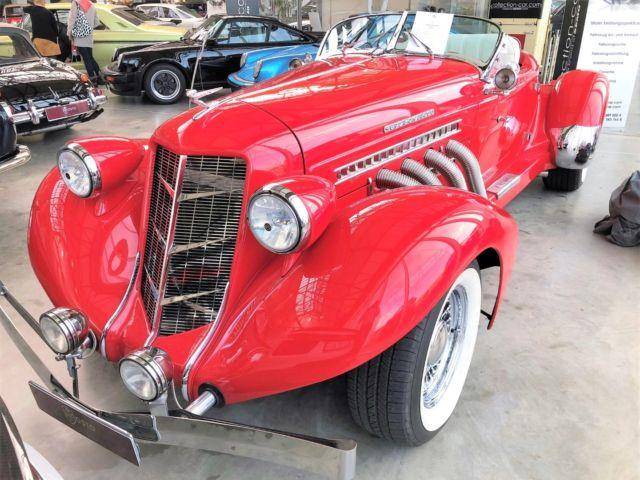
1936 | Auburn Speedster 851
Sonstige Sonstige Andere Auburn Speco Speedster V8 5.3L Einmalig!!
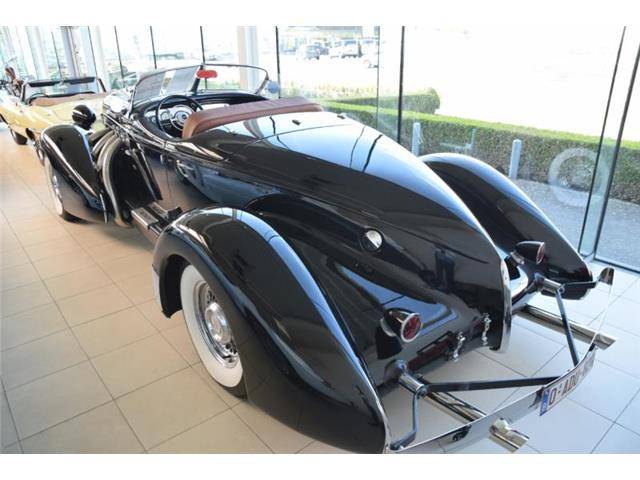
1935 | Auburn Speedster 851
Oldtimer Auburn Speedster 851 Supercharged
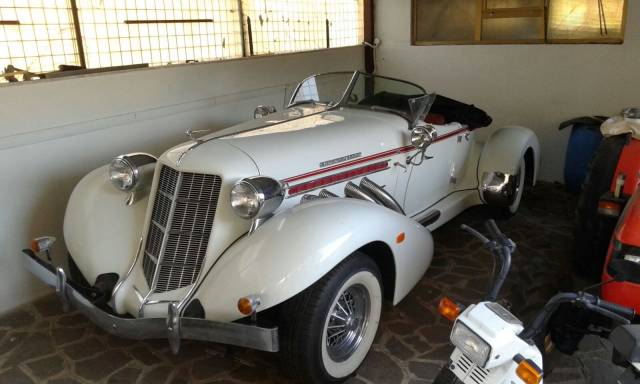
1936 | Auburn Speedster 851
REPLICA MOD 411 7400CC CHEVROLET CORVETTE ENGINE 1990
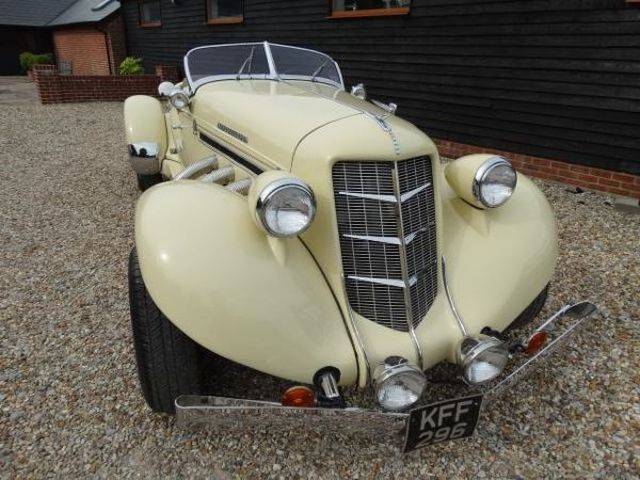
1936 | Auburn Speedster 851
Create search alert
Let yourself be notified as soon as a listing is published that matches your search filters.
Create listing
Do you have a Auburn Speedster that you want to sell? Then create a listing now.
Create listingHistory of the Auburn Speedster
The Auburn Speedster, produced by the Auburn Automobile Company in Indiana from 1928 to 1936, is a remarkable testament to American automotive ambition between the wars. The company launched the Speedster to showcase what was possible in styling and performance, employing celebrated designers and pushing the technical limits of the era. The Speedster was not only a demonstration of advanced engineering but also a response to the economic challenges of the Great Depression, in which Auburn strove to offer affordable performance with captivating aesthetics.
Model History
Auburn released three series of the Speedster over its production life. The first two series, introduced in the late 1920s and early 1930s, were crafted by Alan Leamy, whose art deco influences are visible in the sweeping curves and signature boat-tail rear. The third series, the 851 Speedster, hit the market in 1935 with a new body styled by Gordon Buehrig, incorporating streamlined elements and more pronounced aerodynamic features. The 851 was succeeded by the 856, a slightly updated but far rarer variant. A total of 887 units were built across all series, making each one a rare sight today.
Highlights of the Auburn Speedster
Several features elevate the Auburn Speedster beyond standard contemporaries. Powered by a supercharged straight-eight engine—an unusual feature for its time—the car achieved true high-performance status, demonstrated by Al Jenkins setting over 70 American speed records in 1935. The unique "boat-tail" design and exceptional craftsmanship set these Speedsters apart visually.
From our statistics database, supply is dominated by the 851 series, which accounts for 95.5% of current marketplace listings, while the 856 variant is far less frequently found. Demand closely mirrors this: the 851 receives nearly 80% of listing views for all Auburn Speedsters, signalling a strong preference among enthusiasts for this generation.
Technical Data
Special Editions and Collectible Models
Among Auburn Speedsters, the 851 series stands out due to its direct association with Al Jenkins’ speed record pursuits, as well as its distinctive design evolution under Gordon Buehrig. The 856 model, produced in extremely limited numbers, also qualifies as a special edition, thanks to its rarity and subtle refinements over the 851.
Weak Spots and Common Issues
Based on known data, the Auburn Speedster was built with advanced engineering quality for its period, but prospective buyers should be aware of issues typical to supercharged straight-eights—like attention to regular servicing of the supercharger system and engine internals. Bodywork and chrome restoration requires specialist knowledge due to the car’s specific contours and details. Limited original parts availability may also present challenges for authentic restorations.
Engine and Performance, Transmission and Handling
The highlight of the Auburn Speedster’s performance is its supercharged Lycoming straight-eight, delivering high output and reliability. The innovative engineering enabled the vehicle to achieve speeds untouched by many rivals in its day; this was cemented with over 70 American speed records. Handling was above average for the era, thanks to a strong chassis and independent suspension. Hydraulic brakes contributed to superior stopping power, a feature not common on all contemporary vehicles. - Auburn 851 Speedster: Recognised for its association with record-breaking runs and widespread engineering improvements.
- Auburn 856 Speedster: Notable for extreme rarity and subtle refinements, making it especially sought-after by marque experts.
Interior, Comfort, Exterior and Design
The Auburn Speedster’s design, first by Alan Leamy and later refined by Gordon Buehrig, is defined by its sweeping fenders, sharply pointed boat-tail rear, and low windscreen. The 1935 model introduced improved aerodynamics and a more streamlined silhouette. Interiors emphasised crafted wood and leather trimmings, matching the opulence expected by luxury buyers of the period. Most examples feature striking two-tone paint schemes and period-correct accessories, including exterior-mounted spare wheels and unique dash instrumentation. The dashboard configuration is tailored for enthusiastic driving, reflecting the car’s dual character as both a grand tourer and performance machine.
Other Features
Given technological innovations for its time, the Auburn Speedster includes advanced instrumentation, period-accurate lighting options, and options for open or closed cockpit configurations. Some units were delivered with custom coachwork or tailored trim, underscoring the car’s semi-bespoke status.
Summary
The Auburn Speedster distinguishes itself as an expression of American speed, craftsmanship, and visual daring during the interwar years. Its rare production numbers, engineering milestones, and close ties to record-breaking feats ensure its place in automotive history remains secure. Enthusiasts seeking an American classic with genuine historic and mechanical depth will find the Speedster an unparalleled option.